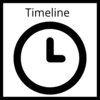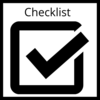According to your start and end dates ( 2026-01-07 to 2026-02-02 ),
you have 26 days to finish your assignment.

Your steps
Click on the steps to expand or collapse. Expand All Steps (+)Step 1: Getting Started
Complete by Fri Jan 09, 2026
Percent time spent on this step: 10%
A: Understand your assignment 1%
Determine exactly what the assignment is asking you to do. Read the assignment carefully to determine the topic, purpose, audience, format, and length. For more information, see the Writing and Communication Centre's resource Understanding your assignment.
B: Conduct preliminary research 3%
Do some general reading about your topic to figure out:
- what are the current issues in your subject area?
- is there enough information for you to proceed?
See the Library's resource Conduct preliminary research (PDF).
C: Narrow your topic 3%
Use traditional journalistic questions (who, what, where, when, why) to focus on a specific aspect of your topic. It will make your paper more manageable, and you will be more likely to succeed in writing something with depth. Read more about Developing and narrowing a research topic.
D: Develop a research question 3%
A research question guides your research. It provides boundaries, so that when you gather resources you focus only on information that helps to answer your question. See the Writing and Communication Centre's resource Develop a research question.
Step 2: Research
Complete by Sun Jan 18, 2026
Percent time spent on this step: 35%
A: Design your research strategy 5%
List the types of literature that may contain useful information for your topic, and isolate the main concepts. Use these concepts to build a list of relevant/useful search terms. For more information, see the Libraries' resource on Effective research strategies (PDF).
This Search statement worksheet (PDF) can help you organize your research strategy.
B: Find and evaluate sources 10%
Not all sources are equally useful. The content of sources you choose must be relevant and current, and you need to make sure you're using academically valid sources such as peer-reviewed journal articles and books. The RADAR method, introduced in the RADAR Framework module, can help you consider the relevance, authority, date, accuracy, and the reason for its creation.
As you read your sources, take notes about important elements such as the main arguments or hypotheses, the theoretical frameworks the author uses or the design of their study, and the findings or conclusions. Is there anything you find questionable, such as weak links in an argument, or a small sample size for a study? What are the strengths of the work? How is it specifically useful to your research topic or question?
If you need to do more extensive source evaluation, consult the Libraries' Assessing Source Quality (beyond RADAR) module for guidance.
C: Conduct research 20%
Gather your information and keep careful track of your sources as you go along. See the Libraries' resource Conducting research and note taking (PDF) or consult the Student Success Office's A beginner's guide to notetaking.
Step3: Organizing your essay
Complete by Thu Jan 22, 2026
Percent time spent on this step: 15%
A: Move from research to writing: how to think 8%
This critical step involves using the information you've gathered to form your own ideas. This resource can help you get the most out of what you're reading: Reading and listening critically.
You've read a good deal of information and now you have to analyze and synthesize it into something new and worth writing about. See How to think: move from research to writing for the kind of questions that can guide you through this process.
B: Develop a thesis statement 3%
A strong thesis statement is the cornerstone of a good research essay. Your thesis needs to be clean, concise, focused, and supportable. In most cases, it should also be debatable.
C: Outline the structure of your paper 4%
Organize your ideas and information into topics and subtopics. Outline the order in which you will write about the topics. For more information on how create a good outline, see the Writing and Communication Centre's Two ways to create an outline: graphic and linear.
Step 4: Writing the first draft
Complete by Tue Jan 27, 2026
Percent time spent on this step: 20%
Time to get writing! A first draft is a preliminary attempt to get ideas down on paper. It's okay if your ideas aren't completely formed yet. Let go of perfection and write quickly. You can revise later.
For additional help, check out the Writing and Communication Centre's resource on Writing a first draft.
Step 5: Revising and proofreading
Complete by Mon Feb 02, 2026
Percent time spent on this step: 20%
A: Evaluate your first draft and conduct additional research as needed 10%
Determine if there are any gaps in your draft. Do you have enough evidence to support your arguments? If you don't, you should conduct further research.
B: Revise your draft 5%
Print out your paper and work from a hard copy. Read it carefully and look for higher order problems first, such as organization, structure, and argument development. For more help with these higher order issues, check out the tips for revision.
C: Evaluate your second draft and rewrite as needed 5%
Narrow your focus to paragraph-level issues such as evidence, analysis, flow, and transitions. To improve your flow and transitions, see the Writing and Communication Centre's resource on Transition words and phrases.
D: Proofread and put your paper into its final format 5%
Last step! Read carefully to catch all those small errors. Here are some tips on Proofreading strategies. Also take time to make sure your paper adheres to the conventions of the style guide you're using. Think about titles, margins, page numbers, reference lists, and citations.
The University of Waterloo's Writing and Communication Centre has a number of resources that can help you in revising and proofreading:
Citing your sources:
Follow the citation style guide recommended in your assignment or by your instructor. Construct citations for each of the sources using the required style (e.g., APA, Chicago, IEE, MLA) and consult the Libraries' citation modules and infographics for help. Using reference management software can help you manage your citations as you write. Use tools such as Zotero, which has unlimited storage provided by the UW Libraries, or Mendeley to build your bibliography.

